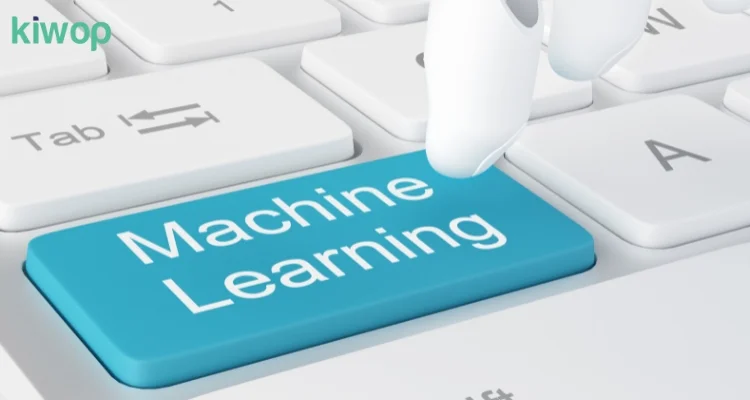Technological advancement has taken marketing into fascinating territory where data, automation and prediction play a key role in the effectiveness of advertising strategies. Within this evolution, machine learning has emerged as a powerful tool capable of unlocking new optimization frontiers in digital advertising. This extensive manual will guide you through the basics of this technology, give you practical keys to its implementation and present real cases that illustrate its impact on the transformation of advertising campaigns. Join the intelligent advertising revolution and learn how machine learning can boost your strategies and performance.
Contemporary advertising is moving in leaps and bounds towards a more intelligent and personalized model, thanks to the increasing adoption of artificial intelligence (AI) techniques, specifically machine learning. This technique allows marketers to gather more accurate data about their audiences, which in turn gives them the ability to fine-tune campaigns with uncanny accuracy, maximizing ROI.
As the amount of available data continues to grow exponentially, the old marketing paradigm based on rigid assumptions and segmentations is being replaced by one that uses complex algorithms to find patterns and make predictions. These algorithms can automate key decisions in real time, enabling agile changes and immediate responses to fluctuating market and audience dynamics.
You don’t need to be a data scientist to understand machine learning, but it is crucial to be clear about some key concepts.
It is based on the idea that systems can learn from data, identify patterns and make decisions with minimal human intervention. This approach is divided into two main categories:
In addition, it is vital to understand the following basic terms:
This basic understanding will lay the foundation for marketers to take advantage of this powerful tool.

Machine learning has a direct impact on almost every facet of an advertising campaign, from segmentation and targeting, to bid optimization and ad personalization. Here we break down how this technology can improve each of these aspects:
Machine learning algorithms can analyze large volumes of consumer data to identify specific segments with similar characteristics. This allows targeting ads to much more precise audiences than traditional targeting methods that tend to be more limited and static.
For example, a sneaker brand might discover through machine learning that there is a group of consumers in a city who show a high level of interest in a recent model of sneakers, even though they are not directly related to products previously advertised to this particular group.
In programmatic advertising, it can help determine how much an advertiser should pay for an impression based on the likelihood that the ad will achieve its marketing objectives. This is known as ‘bidding’ and can be dynamically adjusted by the algorithm in real time, based on audience behavior and data collected.
This real-time adjustment helps to avoid losing valuable impressions and to use the budget more effectively.
Machine learning is essential for large-scale personalization. Based on past behavior, preferences and other demographic data, algorithms can serve ads that are highly relevant to each individual.
Bank X, for example, could personalize its mortgage loan advertisements through machine learning, offering terms and rates that are particularly attractive to potential customers based on their credit history and financial situation.
Considering that machine learning can seem overwhelming at first, it is key to start with simple and measurable steps. Here is a guide to implement this tool in your advertising campaigns:
Data quality is vital. It is necessary to have a good structure to collect valuable information and make sure it is organized in such a way that it is easy to interpret by machine learning algorithms.
Google tools, for example, offer specific solutions for this purpose, such as Google Analytics or Google Tag Manager, which can be used to establish a solid database to feed machine learning models.
There are a variety of machine learning platforms that offer specialized services for marketing and advertising. Some of the most popular include Google’s TensorFlow, Keras and PyTorch. The choice of platform will depend on the needs and expertise of each marketing team.
Once the platform is selected, the appropriate API needs to be integrated into the existing advertising system. This could involve working with your information technology (IT) department or, in the case of smaller companies, a developer with machine learning expertise.
Algorithms must be constantly updated and refined. To this end, it is crucial to establish a feedback methodology to improve the model with data collected from running campaigns.
This continuous learning approach ensures that the model remains relevant as audience patterns and preferences change.
The reality is that machine learning is already transforming the companies that use it. Some examples include:
Amazon is known for its recommendation algorithm that uses machine learning. Based on past purchase behavior, preferences and consumption patterns, the algorithm recommends products in a personalized way to each user.
Spotify uses machine learning for programmatic advertising, serving ads that are highly relevant to the listener, which increases the likelihood that they will interact with them.
The impact of these and other strategies based on machine learning has been significant, demonstrating that this technology is not only a distant future, but a current and effective tool to optimize advertising campaigns.

As technology continues to evolve, the possibilities for the application of machine learning in marketing will continue to expand. Some trends we can expect in the future include:
Machine learning algorithms are becoming increasingly sophisticated, which will enable greater automation in areas such as content creation and multichannel strategy optimization.
Machine learning can be used to predict future trends based on past patterns, allowing brands to stay one step ahead and adjust their marketing strategies in advance.
Predictive analytics tools are becoming more accurate thanks to machine learning, which will enable marketers to make more informed and strategic decisions.
These trends provide a glimpse into the exciting potential of machine learning to redefine marketing as we know it.
Machine learning is taking advertising to a new horizon, where campaigns are more accurate, relevant and effective. For marketers, competition for consumer attention has never been fiercer, and the need for advanced tools is more pressing than ever.
While the adoption process can be challenging, the rewards of highly optimized and cost-effective campaigns make it worth the effort.
Take the first step in implementing machine learning in your advertising strategy. Experiment, learn from the results and evolve your campaigns into the next era of marketing, at Kiwop we are here to help you!
If you want to have the website you want or increase the online visibility of your brand, we know how to do it.
Shall we start today?
Leave a Reply